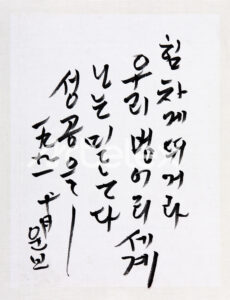Kim Ki-chang (1913 – 2001) was a South Korean painter specializing in traditional Eastern painting, known by his pen names Unbo (雲甫) and Unpo (雲圃). .
At the age of 24, Kim Ki-chang won the highest award at the Joseon Art Exhibition, and by 27, he was selected as a recommended artist for the exhibition. However, during this time, he became involved in pro-Japanese activities, participating in exhibitions that supported the Japanese colonial agenda of “naisen ittai” (Japan and Korea as one).
From 1942 to 1944, he participated in the Pan-Korean Rear Guard Art Exhibition, a pro-Japanese art exhibition during the latter years of Japanese rule, where he was selected as a recommended artist in the Japanese painting category. Some of his works from this period have been criticized as pro-Japanese.
He also collaborated with fundraising efforts for the Japanese government through exhibitions like the Joseon Southern Painting League Exhibition in 1940 and the Patriotic Hundred People’s Poetry Exhibition in 1943.
In 1943, Kim Ki-chang met fellow Eastern painter Park Rae-hyun, and after three years of communicating through written notes, they married in 1946.
In 1957, Kim Ki-chang was invited to exhibit at the Korean Contemporary Artists Exhibition hosted by World House Gallery in New York. In 1960, he became an invited artist at the National Art Exhibition of Korea and served as a judge. He also participated in Korean art exhibitions held in Taipei, Hong Kong, Tokyo, and Manila, contributing to the international recognition of Korean art.
In 1962, he began teaching at Seoul Women’s Teachers’ College (later Sejong University) and exhibited at the Exhibition of Free World Culture.
In 1964, he was invited to the United States by the U.S. State Department and held a solo exhibition in New York in 1969. He also taught at Hongik University and Sejong University, contributing to the education of future artists.
In 1979, Kim Ki-chang founded the Korean Association for the Welfare of the Deaf and became its first president. In 1984, he established the Cheong-eum Center in Yeoksam-dong, Seoul, a welfare center for the hearing impaired, to improve their quality of life.

